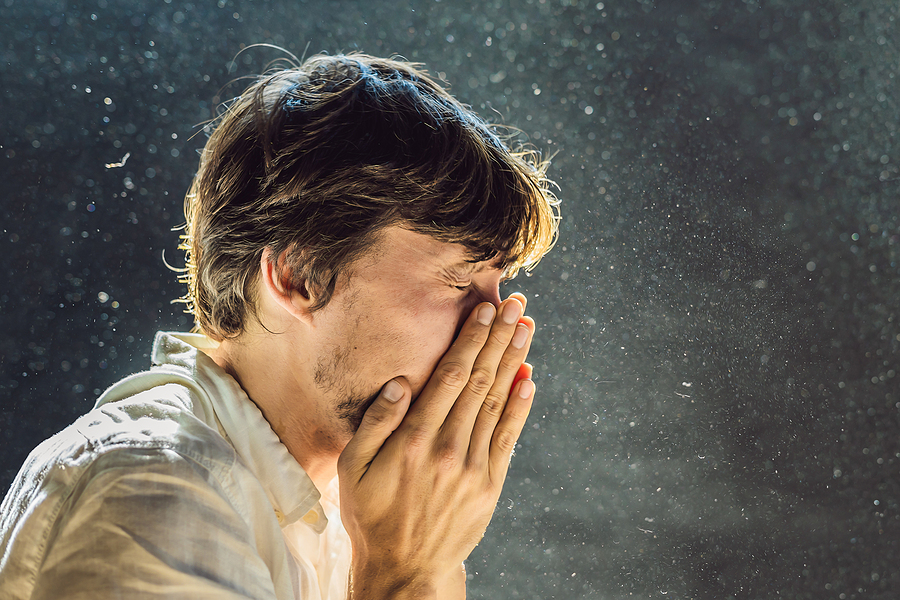
A nagging tickle in your throat has you coughing nonstop for hours and keeps you up all night. No matter how much you cough, you can’t seem to clear your throat. You’ve coughed so much your throat stings. Coughs may … Continue reading
READ MORE
Spring and fall are not the only times of the year for allergies. Many people suffer from winter allergies, which can be more irritating as drier air inside the home adds to your woes. Lack of humidity within your home does more than trigger static electricity. It also dries out your nasal lining, which adds to the irritation and inflammation you experience.
Winter allergies are an annoyance that doesn’t seem fair when you’re also in the height of cold and flu season. How do you ease winter allergies and keep the symptoms from dragging you down, learn more with expert insights from our team at Premium Allergy.
While many people think of trees, weeds, and flowers as the biggest allergy triggers, there are many others. Some are more prevalent in the winter as furnaces and boilers kick on to keep homes warm enough.
Dust mites increase in the winter as they seek warmth and humidity. Symptoms include:
Lowering your thermostat can help keep dust mites from rapidly multiplying. However, your comfort is more important. Wash your bedding often, vacuum regularly, and leave window blinds open to let in sunlight as much as you can. Dust mites don’t do well in dry rooms.
Another possible winter allergy is to household cleaners. Washing clothing in heavily scented products or using scent beads may smell nice, but they irritate the skin and sinuses. Cleaning products used on tubs, toilets, sinks, and counters also contain strong chemicals that can irritate the sinuses and skin.
It’s worse because the windows are closed. Unless you’re running an air purifier that filters the air of volatile compounds, the cleaner’s particles stay in the air for a while. Symptoms include:
Instead of using chemical cleaners, try natural ones like lemon juice and baking soda or distilled white vinegar.
Mold forms where there is warmth and humidity. With hotter showers and more frequent baths, the bathroom becomes a haven for mold and mildew, especially if the ventilation isn’t working effectively.
Gaps near windows and doors that allow air transfer are another spot where mildew and mold develop. If there are leaking pipes or higher humidity levels in a bedroom, you might find mold and cabinet floors, walls, and window frames.
Rain and snow melt is also an issue with mold development. If there’s a slow leak that’s allowing water to seep into your attic, you may not realize the insulation is getting moldy. Symptoms of mold allergies include:
Purchase mold detection kits at home improvement and hardware stores. Check common areas like under sinks, window frames, walls, and ceilings for signs of mold. If you see them, contact a mold remediation expert for advice on what to do next. Some types of mold are dangerous and shouldn’t be removed as a DIY project.
For small amounts of mold on window frames, especially vinyl ones, use hydrogen peroxide mixed with water as a spray to kill the mold spores. Wipe them up and run a dehumidifier in any room where the humidity is too high and encourages mold growth.
An allergy to your family pet is tough. You don’t want to feel lousy, but you can’t give up a cherished family member either. Pet allergies occur when the dead flakes of skin on your pet’s body are shed onto carpeting, floors, and furniture.
Vacuuming and dusting regularly make a difference. Wear a mask when you do. Run an air purifier to draw the minuscule particles into an air filter that traps them.
When it’s too cool or damp to open windows, the air inside a home becomes stagnant. Many people turn to burn scented candles, wax melts, or plug-in devices to fill a home with an appealing fragrance. These items may smell great, but they can also trigger an allergic response. Some of the most prevalent symptoms of this type of allergy are:
If you must fill your home with a scent, consider adding some vanilla and cinnamon sticks to a saucepan and bringing that to a boil in your kitchen. Lower it to a simmer and let that scent fill your home instead of artificial fragrances.
A cozy fire in a fireplace or woodstove does set a comforting mood, but that smoke also irritates the sinuses. The common symptoms of wood smoke allergies are:
If wood smoke affects you, it might be better to avoid burning wood in your home. You can’t do too much about neighbors who burn wood. Therefore, consider wearing a mask to limit how much smoke you inhale when you’re outside.
Once you pinpoint your allergies, you can work on finding the best allergy treatment. Over-the-counter antihistamines help. If they’re not helping, talk to an allergy doctor about prescription medications.
It’s also important to have the right humidity level within your home. If it’s too damp, mold is more likely to form. If it’s too dry, your sinus tissue dries out and becomes irritated. Aim for 40% to 60%, but many experts feel 50% is the sweet spot for allergy sufferers.
If your home is too humid, add dehumidifiers to rooms that tend to have higher humidity levels, such as a bathroom and kitchen. If it’s too dry, invest in a humidifier or add houseplants to your home.
Nagging winter allergies are best treated with allergy shots. Premium Allergy offers three types of allergen immunotherapy that may provide lasting relief, depending on what allergy tests show.
Intralymphatic takes a total of three shots, spaced a month apart. Those shots go straight into a lymph node, so you do need to have the shots done using an ultrasound to guide the needle to the correct place.
Subcutaneous are the standard allergy shots that most people think of. You go for an allergy shot each week or so for as long as five years. In that time, your body slowly develops a healthier response to the allergen.
The newer sublingual treatments are often preferred by people who dislike needles. Instead of an allergy shot, a drop or dissolvable tablet is placed under the tongue each day for up to five years.
With each option, your body has time to slowly acclimate to the allergen and form a healthier response. Instead of attacking the allergen with a full-blown inflammatory attack that makes you feel sick, that inflammation eases and you experience fewer or minor symptoms that no longer keep you from your routines. Book an appointment with Premium Allergy today!